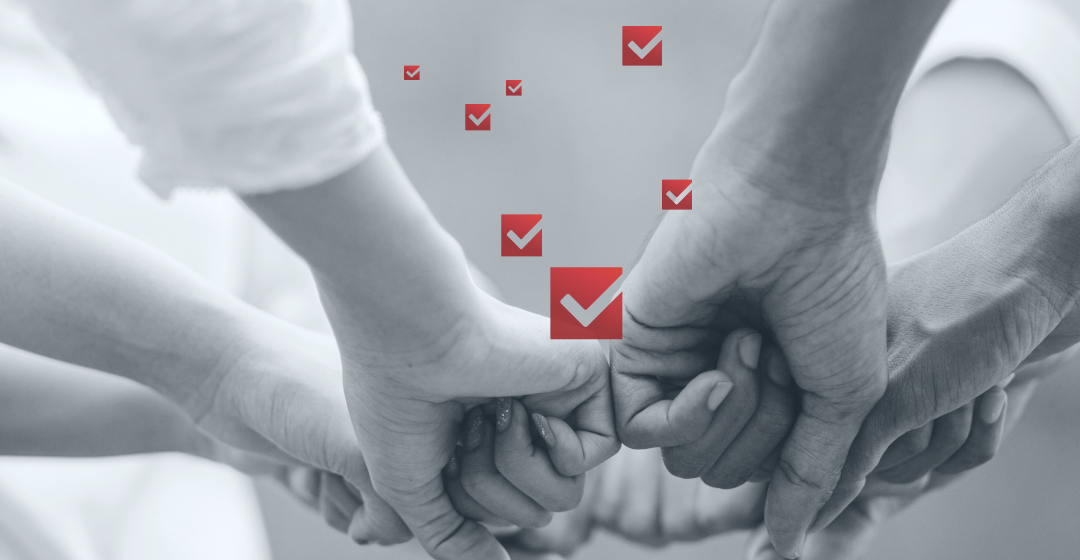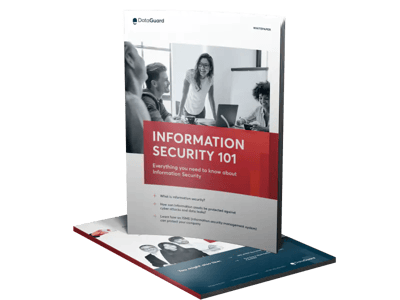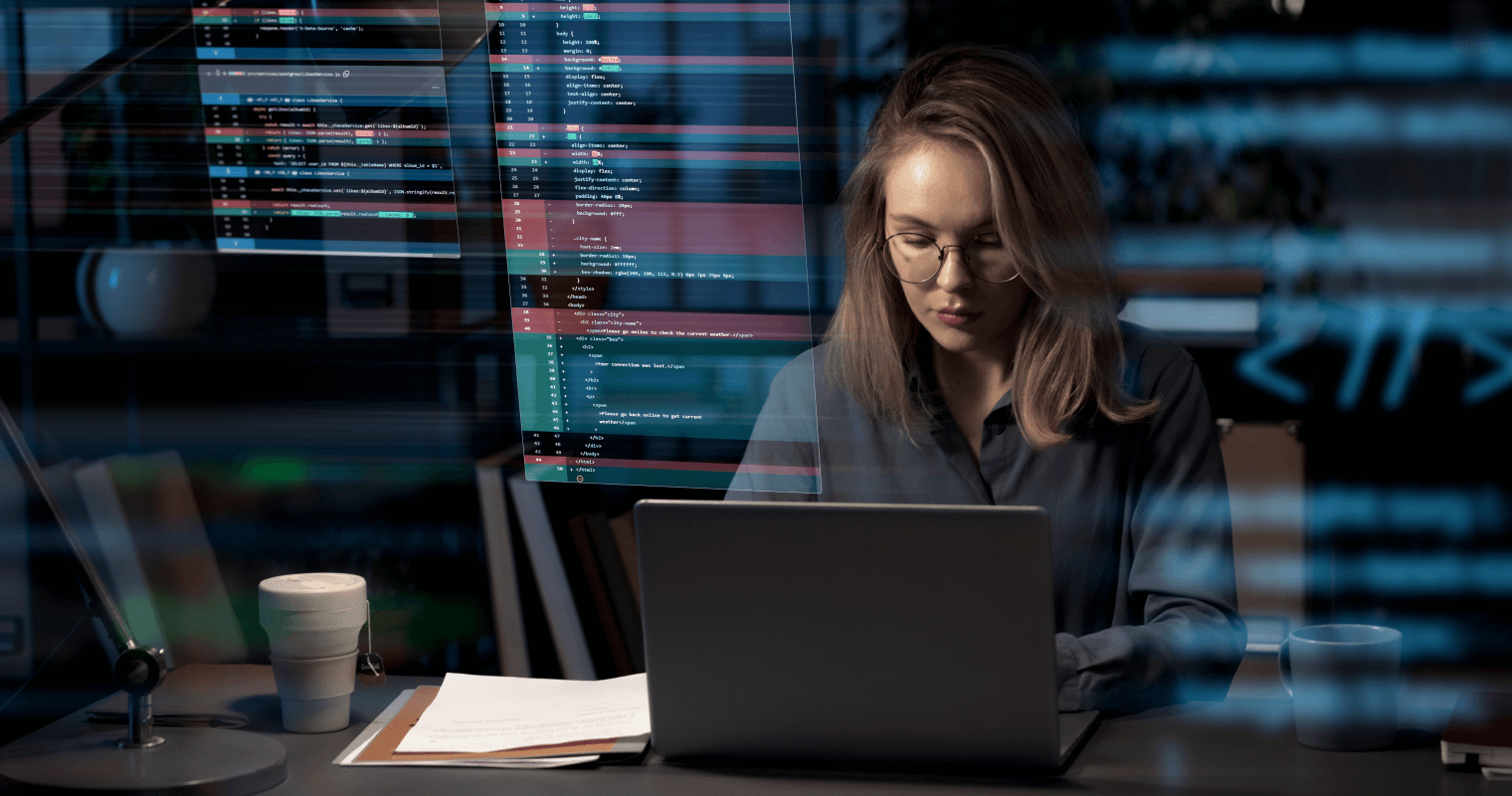Cybersecurity: What is it and why is it important?
Cybersecurity is the practice of protecting digital systems, networks and data from unauthorised access, use, disclosure, disruption, modification or destruction. It is important to protect cyber security because cyberattacks can have a devastating impact on individuals, businesses and governments. Cyberattacks can result in financial loss, identity theft, data breaches and even physical harm. They can also disrupt business operations, damage reputations, and threaten national security.
While the primary goal of cybersecurity is to protect our digital assets, including smartphones, laptops and online services, it's important to understand that attackers can be driven by a variety of motivations, ranging from financial gain to political agendas.
Reasons for cyberattacks
Cyberattacks are often motivated by direct financial gain. An attacker may try to extort money, make a profit by reselling captured data or access bank accounts. This type of attack is known as cybercrime.
- In industrial espionage, cybercriminals also use cyberattacks to pursue criminal goals. Non-state actors may try to penetrate the IT systems of competitors to obtain trade secrets and other valuable information.
- In times of geopolitical tension, however, state actors must also be scrutinised more closely. Critical infrastructure is often targeted to destabilise public security or sabotage energy supplies, for example.
- Additionally, there are many activist groups operating in cyberspace with very different agendas. Anonymous, a collective that has targeted government agencies and global corporations, has gained worldwide notoriety for its high-profile cyberattacks.
Cybersecurity and information security: Understanding the difference
Information security is an umbrella term for various methods and techniques that organisations use to protect all of their information assets.
It’s focused on establishing policies and ensuring the integrity and confidentiality of information across the organisation.
An organisation’s information assets include:
- All digitally stored information
- All software in use, including office and cloud applications
- Hardware such as servers, notebooks, and smartphones
- Staff and office buildings
- Intangible assets such as reputation and intellectual property
Cybersecurity should be thought of as a subset of information security. While cybersecurity deals with a company’s digital security, information security goes beyond this to include physical, personnel and organisational security.
In the digital age, a business’ only chance of success is to take action in both areas.

In order to be able to play the desired video, you agree that a connection to the servers of YouTube, LLC, 901 Cherry Ave, San Bruno, CA 94066, USA is established. This transmits personal data (device and browser information (in particular the IP address and operating system) to the operator of the portal for usage analysis.
You can find more information about the handling of your personal data in our privacy policy.
What methods of cyberattacks do I need to be aware of?
Cybercriminals are constantly coming up with new ways to exploit your company’s vulnerabilities. But on the other hand, cybersecurity experts and software developers are continually working on closing those very same security gaps.
This game of cat and mouse means the threat profile your company faces is constantly evolving. The various attacks can be categorised as follows:
Phishing
Phishing is a type of fraud. In a phishing attack, the attacker attempts to imitate websites, emails or texts from trusted senders to trick the user into revealing sensitive information.
Phishing is the number one vulnerability for cybercriminals: the US Cybersecurity & Infrastructure Security Agency (CISA) estimates that more than 90% of all cyberattacks begin with a phishing email.
When it comes to phishing attacks, the human factor is critical. If a user can recognise a phishing attempt and does not click on fraudulent links, the attack will fail. Additionally, using an SPF record checker can help users spot and avoid phishing emails, adding an extra layer of protection against fraudulent links.
Therefore, it is vital that your company conducts regular cybersecurity training and awareness sessions for all employees to minimise the threat of phishing. Read more about that in “How the EU is preventing cyber threats”.
Social engineering and insider threats: The Human factor
As explained in our discussion of phishing, an IT system's security hinges on its human users' behaviour.
Attackers exploit this vulnerability through what is known as social engineering. The term refers to the psychological manipulation of users to persuade them to take certain actions or provide information.
Phishing is the most common form of social engineering, but there are many other methods of exploiting people’s curiosity or trust to commit fraud.
In addition to deliberate manipulation, user behaviour can also inadvertently compromise IT security. Examples include:
- Mixing business and personal use of a computer
- Using the same password for multiple cloud applications
- Insufficient security in home office networks
These insider threats are often undetectable by security systems because they occur behind the security perimeter.
Such threats also include malicious actions by employees who abuse their access rights to share trade secrets and sensitive data with third parties.
Malware
Malware is any malicious software that runs silently on a user’s device to access files or damage.
Common forms include viruses, trojans and spyware.
In recent years, ransomware has emerged as the most significant form of malware. In 2021, 623 million ransomware attacks were recorded worldwide, more than in any other year to date. A ransomware attack occurs when malware encrypts the files on an infected system, and the attacker demands a ransom to decrypt them.
Distributed denial-of-service (DDoS) attacks
A distributed denial-of-service or DDoS attack is when an attacker tries to overload a server or network with so many requests that it stops working.
The requests are often automated by botnets, but in cyberactivism they can also come from a large number of people coordinating through social media.
Current trends in cybersecurity
The threats posed by cyberattacks are constantly changing. Whether you’re a startup, an SME or a large enterprise, staying informed and responding to new developments is critical to the success of your business.
Step up your game for the future with our 5 cybersecurity tips for SMBs
Here are some of the key trends.
AI is on the rise
AI technology is starting to make its way into many areas of personal and professional life.
Employees are increasingly using programmes such as ChatGPT to help with research and reports. What they don’t realise is that they may be uploading sensitive company data to the servers of overseas companies, which is a violation of data protection policy.
Of greater concern in boardrooms around the world, however, is the emerging ability of attackers to use generative AI to automate time-consuming attacks such as phishing. Artificial intelligence could also help criminals scan the internet more widely and quickly for vulnerabilities.
In turn, AI is likely to increase the level of cybersecurity as organisations turn to big data analytics to identify attack patterns and predict threats.
Only one thing is certain: the arms race on both sides will only increase the complexity and speed of the cybersecurity landscape.
Without platform solutions and external advice, small and medium-sized businesses will not be able to keep up.
More devices, more vulnerabilities
The Internet of Things (IoT) is here to stay. These days, more and more hardware is being equipped with sensors and connected to the internet. But this opens up the system to cyberattacks.
The MedTech sector is particularly vulnerable. Connected sensors and digital tools are enabling groundbreaking improvements in patient care, which is why many security vulnerabilities require attention.
In addition, the way we work has changed fundamentally since the COVID-19 pandemic. Working from home on mobile devices is the new norm. Bring-your-own-device policies make working more flexible and convenient for employees but also make life more difficult for IT departments.
A greater focus on people
According to Gartner, by 2027, 75% of an organisation’s employees will acquire, modify or create digital technologies outside of IT’s visibility.
Plus, remote work means that cloud services are being used more and more.
All this means that a people-focused cybersecurity strategy is becoming a must-have:
- Security teams should prioritise a good user experience (UX)
- Empathy for employees’ pain points is essential
- Align your cybersecurity with your business objectives to demonstrate its benefits
- Raise cybersecurity awareness among all your employees through regular, professionally-led training sessions
More regulation
Governments worldwide are recognising the dramatically increased threat that cyberattacks pose to their economies and public safety.
As a result, they are adopting new policies that tighten the requirements on affected companies and expand regulators' powers.
In the EU, this is the NIS2 Directive, which came into force on 16 January 2023 and aims to strengthen cybersecurity across all relevant sectors of the economy.
Under NIS2, more companies than ever before will be required to implement security measures. And directors and management can be held personally liable for failures in implementation.
Here is an overview of what you need to do with our NIS2 compliance checklist.
Meeting these new and complex requirements will require significant effort and tie-up staffing resources. But companies are already facing a shortage of skilled workers.
Skilled workers in high demand
Last year, there were already nearly 1.2 million vacancies in the UK, while Germany faces a shortage of around 100,000 cybersecurity professionals. Tightened regulatory requirements such as the NIS2 Directive will only exacerbate the situation.
Companies can reduce the cost and effort of implementation by using software platforms. They should also work with external consultants as a workaround for the shortage of skilled workers.
Why is cybersecurity crucial for my company?
There is now a high level of awareness of cyber risks among senior management. However, heads of IT and chief information security officers (CISOs) are still failing to implement cybersecurity initiatives in their organisations. Here are 6 ways CEOs can improve cybersecurity.
To ensure that these issues are prioritised, they need to clarify the impact of cybersecurity threats on business objectives.
The consequences of cyberattacks
- Business disruption: Disruption was voted the biggest business risk in the Allianz Risk Barometer 2023. DDoS attacks, ransomware and other forms of malware seek to put a halt to business processes.
- Data breaches: In 2023, the global average cost of a data breach was $4.45 million.
- Reputational damage: If your company responds poorly to an attack, partners, investors, and customers will lose trust in you. This jeopardises your future and current business activities, threatening your financial stability. Boards around the world are waking up to this threat, ranking reputational damage as a top business risk.
- Heavy fines and penalties: If a company suffers a data breach and is found to have failed to comply with legal requirements, it can face heavy fines. According to the EU’s NIS2 Directive, up to €10 million or 2% of global turnover. Moreover, directors and managers can be held personally liable.
Data protection as a competitive advantage
Customers are more clued in today due to increased media coverage of data breaches.
Cybersecurity, information security and data protection are no longer just a matter of corporate compliance but have a direct impact on customers’ purchasing decisions. Trust is your company’s most valuable asset.
Certification according to an internationally recognised information security standard such as ISO 27001 demonstrates to your customers and partners that you take cybersecurity seriously. Which turns trust into a competitive advantage.
How can I protect my company against cyberattacks?
As you can see, the need for action is great. But how can you make your company more cyber resilient in the long term? To answer this question, we will first give you an overview of the different areas of cybersecurity and the concrete actions that you can take. We will then outline the steps you can take to build a forward-looking cybersecurity strategy in your organisation.
Subsets of cybersecurity
Cybersecurity is made up of many domains. Here is an overview of the most important ones:
Network security
Network security deals with measures to protect computer networks from hackers. In short, it must protect all the devices connected to a network and the data moving between them.
It also must ensure high network availability and prevent technical problems that could lead to business disruption.
Organisations often have complex local area networks with many connected devices.
Such a network is known as an intranet and is protected by a number of security measures:
- Firewalls: Firewalls are placed between computers and the web to control incoming and outgoing traffic. They use a set of security rules to decide whether to block a connection, for example, because it contains malware.
- Virtual private networks (VPNs): VPNs are closed network connections that cannot be accessed from the outside. They are designed to allow remote workers to connect securely to the corporate intranet.
- Encryption: Ideally, all data is encrypted as it passes through your company. The EU’s NIS2 Directive makes the use of encryption mandatory for affected companies.
Application security
Application security protects all the software and programs your company uses. This can include locally installed software as well as applications running in the cloud.
Application security recommendations:
- Security updates and patches: Software can often contain security gaps that are popular targets for attackers. Developers provide security updates (patches) to close these gaps. Any software your company uses should always be kept up to date to provide the best possible protection.
- Secure development and purchasing practices: If you develop your software in-house, be sure to follow all good security practices. Use proven packages for basic mechanisms. And when purchasing new applications, security should also play a key role in deciding which ones to buy.
User security
User behaviour is a critical factor in the security of any computer network. The best security technology is useless if a legitimate user gets past the security checkpoints only to introduce a virus or mishandle data.
For this reason, it is vital to raise the security awareness of all employees. Regular training is a good way to keep your staff informed about how to deal with phishing emails, suspicious downloads and other risks.
Since the threats you face are constantly evolving, it is especially important to keep your employees up to date. Your IT specialists are the first point of contact. Listening to the views and concerns of individual departments will help to create a shared culture of security in your company.
Identity and access management (IAM)
Identity and access management (IAM) is how an organisation manages user access to its devices, networks and applications.
An IAM system has two basic tasks: It first has to verify that the user is who they say they are (identity).
It then has to manage access to different content, for example, in the corporate cloud, using a multi-tiered rights system (access).
In this way, IAM enables companies to set individual rights for each user to determine which data they can access as well as which actions they are allowed to take.
IAM includes security measures such as multi-factor authentication, which requires users to log in with a password and a one-time code from a second device.
To prevent insider threats, access rights should be quickly and completely revoked across all applications when an employee leaves your company.
Business continuity and disaster recovery plans
Some things are beyond our control. When natural disasters, power outages or – despite all measures you’ve taken – a cyberattack hits your business, you need to be prepared.
Recovery plans for disasters such as lost data or crashed servers outline the steps you need to take to get your business up and running again. Regular backups of all critical data are an essential part.
Business continuity management (BCM) addresses how your company’s critical operations can continue with limited resources in the event of a disaster.
Risk management
Risk management is the central pillar of your cybersecurity efforts.
Every organisation faces unique risks depending on its size, industry, and business objectives. These risks need to be addressed and dealt with through a tailored risk management plan.
There are 3 steps to risk management:
- Identify and assess risks: Analyse all areas of your business to determine your overall risk profile and prioritise the risks you face.
- Treat risks: Next, determine a course of action for each risk you’ve identified. This can be to avoid, mitigate, transfer or accept the risk.
- Monitor residual risks: A detailed assessment may reveal additional risks. Plus, the risks you face are constantly evolving. The bottom line: Risk management is a continuous process.
A successful risk management plan will help you achieve the best possible protection for your business while conserving resources and reducing costs.
Setting up a cybersecurity strategy
These days, businesses of all sizes have to navigate a complex environment of ever-changing cyber threats. Attacks are becoming more sophisticated and occurring at a faster pace. Without a robust cybersecurity strategy, success is at risk across all industries.
Information security management system according to ISO 27001
A key part of managing business risks is setting up an information security management system (ISMS), which is essentially a set of policies and procedures to help protect a company’s information assets. ISO 27001 is the internationally recognised standard for implementing an ISMS.
In particularly critical sectors such as education and research, the public sector, MedTech and telecommunications, ISO 27001 certification is already becoming the norm. But all other companies can also benefit from certification. Certification demonstrates that your organisation is following best practices in cybersecurity and information security.
When setting up your ISMS according to ISO 27001, it is a smart idea to get help from external consultants. They can conduct a gap analysis to identify the steps your company still needs to take to meet the ISO 27001 requirements and then provide a clear roadmap to help you close those gaps.
They will then work with you to identify all the assets and risks your company needs to manage and help you build your ISMS.
The final step to get you ready for ISO 27001 certification is an internal audit.
Continuous monitoring and improvement
Just getting certified is not the end of the story. Just as attackers are constantly refining their methods, companies need to be on the lookout for new vulnerabilities and developments.
As well as using external service providers to help guide you along the way, appointing a chief information security officer (CISO) can make it easier for your organisation to prioritise cyber security.
Among other roles, a CISO lobbies the board to release the resources needed to provide a growing company with adequate protection in all key areas of information security. A CISO also oversees the various security initiatives and coordinates tasks between IT teams to ensure that the strategy is implemented as efficiently as possible.
What is the benefit of cyber insurance?
Simply put, cyber insurance will help your business to cover the damage caused by cyberattacks.
This could include lost revenue due to business interruption, damaged hardware or even claims against your company as a result of a data breach.
Depending on the policy and provider, ransomware extortion or fines may also be covered.
Before taking out an insurance policy, you should carefully consider whether the money would be better spent on actual security measures. If you still want to insure yourself against the residual risks, first check what cyber risks are already covered by the insurance policies your company already has.
Your next steps on the way to cyber resilience
Designing a robust cybersecurity strategy is no easy task. But it is even more important in an era of ever-increasing threats.
You need to take action and reduce your business risks. The longer you wait, the more expensive and error-prone the process will be – not to mention your business will be less protected.
- If your company is just getting started with cybersecurity, you’ll need to increase the budget for it. Raise security awareness in your company and convince senior management that these investments are the foundation for future business success.
- Scheduling a free initial consultation is a great way to get qualified help. A cybersecurity expert can work with you to develop a budget and timeline, recommend appropriate software solutions, and define the scope of the project.
- Next, the consultant will conduct a gap analysis to identify your unique vulnerabilities and work with you to determine the next steps your organisation should take.
Stay ahead of the game and protect your business from cyber threats by getting in touch with one of our expert advisors. Contact us today to level up your cybersecurity defences and ensure the safety of your valuable assets.


Information Security 101
In this e-book, you will learn how to unlock the power of ISO 27001 for your business.
Download for free








